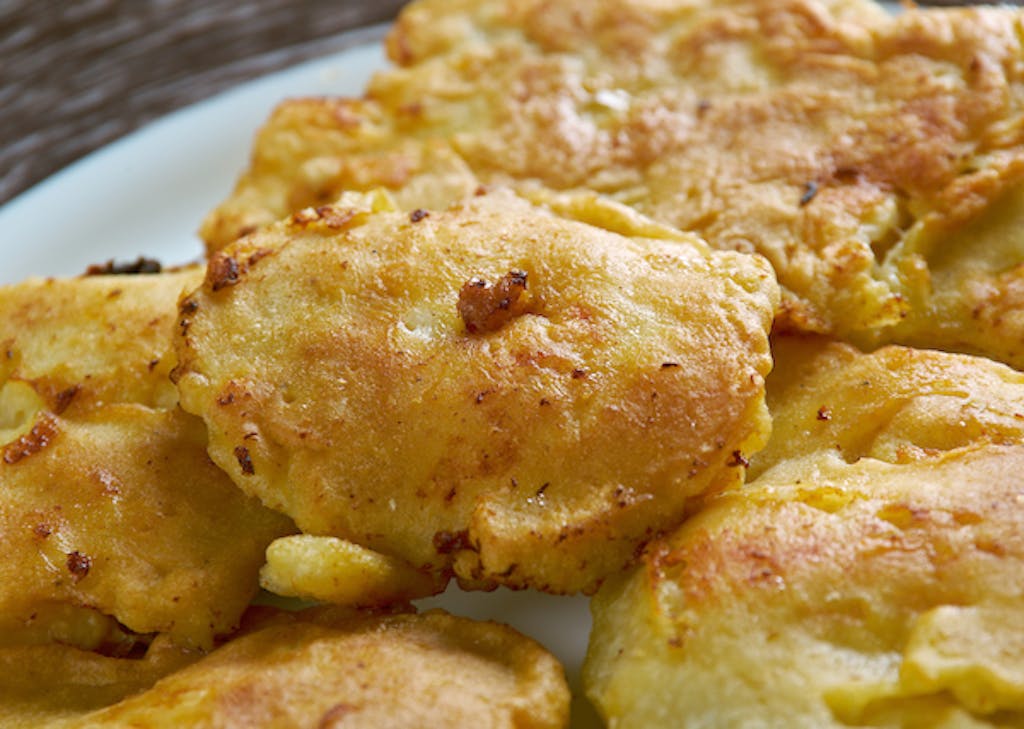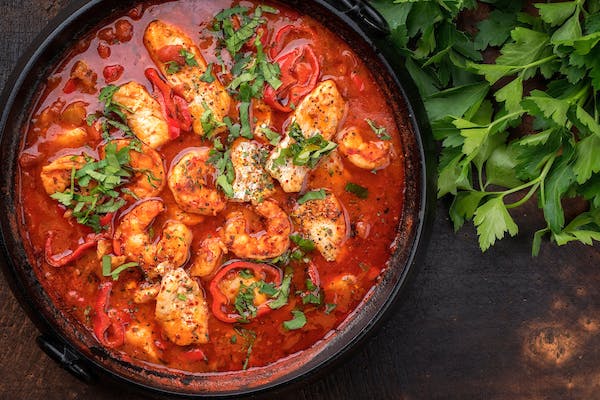Curious About Caribbean Culture? Caribbean Cuisine Can Teach You a Lot
As vibrant and varied as the islands themselves, Caribbean cuisine is a tantalizing, multi-faceted stew of the many cultures and heritages that have shaped this dynamic region.
When Columbus landed in the West Indies, he encountered the native foods of the indigenous peoples. The successive waves of settlers and laborers that followed — West Africans, Spanish, French, British, Dutch and East Indians — added their own culinary influences to the region’s bubbling melting pot.
The result is an exciting gastronomy bursting with flavor as intense as the tropical sun. Mouth-searing hot sauces, aromatic marinades, fruity rum drinks, fiery spice rubs, earthy soups and sweet confections all compete for your palate — thanks to the plethora of herbs and spices used prominently in Caribbean cuisine. Exotic tropical ingredients, such as ackee, breadfruit, carambola, Caribbean yams, cassava, conch, pigeon peas, plantain and sorrel, show off their tempting tastes at the table, while a heady profusion of eye-popping produce takes center stage in colorful markets on every island.
Two imports, in particular, run like a culinary leitmotif throughout the islands: cod fish and sugar. Nothing transformed the cuisine of the Caribbean as much as dried and salted cod, brought to the islands centuries ago by English ships from the North Atlantic. Today, you can sample it in everything from Jamaican ackee and saltfish, to Barbadian codfish cakes to ubiquitous cod fritters, called accras de morue in the French West Indies and bacalaitos in Puerto Rico.

Meanwhile, nothing changed the region’s agriculture as much as sugar cane, which became a profitable plantation crop for its cherished by-products: sugar, rum and molasses. King Sugar revolutionized Caribbean culture socially, politically and economically and gave way to sweet treats ranging from candied tropical fruits and brown sugar fudges to coconut patties and Creole candies. It also sweetened a cornucopia of delectable local fruits — mango, guava, tamarind, coconut, soursop, passion fruit, papaya and pineapple — in ice creams, sherbets and custards.
Over time, rum became almost synonymous with the Caribbean, where distilleries range from small batch to ultra-modern. You can go rum tasting to sample signature brands in the Bahamas, Barbados, Grenada, Jamaica, Martinique, Puerto Rico and St. Maarten. And you can swoon over such desserts as moist dense rum cake, a specialty of the Cayman Islands, and banana pudding with hot rum sauce most anywhere.
Indigenous heritage
Caribbean cuisine began long before Columbus’s arrival. Native Arawak and Carib Indians were cooking with chili peppers to season and preserve their foods. Spicy-hot chilies have remained a staple of the Caribbean diet, turning up the heat in the region’s many varieties of salsa, which means “sauce” in Spanish. Each island boasts its preferred hot sauce, often starring indigenous Scotch bonnet peppers. You can pick up a bottle to add zest to your cooking at home.
Other New World crops favored by the indigenous people, such as pumpkin, papaya, corn, cassava and sweet potatoes, are still an essential part of West Indian cuisine. For example, the cassava flatbread that is eaten throughout the region, called bammy on Jamaica, originated with the Arawaks. And the signature Caribbean soup, pepperpot, also harks back to the Arawaks. Flavored with cassareep, from the juice of the bitter cassava plant, this hearty meat stew has as many versions as there are islands.
In the twin-island nation of Antigua and Barbuda, fungee (cornmeal and okra balls) and pepperpot is the national dish. Another Amerindian tradition that has defined the Caribbean is barbecue, from the Taino word barbacoa for grilling on a raised wooden grate. Jerk, the region’s iconic method of smoke-grilling seasoned pork, chicken or fish over green pimento, or allspice, wood, originated with the Tainos (an Arawak subgroup) in Jamaica and was later adopted by enslaved Africans. These days, fiery jerked meat spiked with incendiary Scotch bonnet peppers shows up everywhere from humble roadside firepits to sophisticated seaside restaurants throughout the Caribbean.
African influence
he Africans who came to the West Indies as enslaved people brought with them the tastes and foods of their homelands. They adapted the West African staple foo-foo, which is cooked and crushed cassava, yam or plantain, into cou-cou, a cornmeal dish with okra popular in Barbados. And they turned it into mofongo, a beloved Puerto Rican side dish made of fried mashed green plantains, mashed garlic and crunchy chicharrón, or pork cracklings.
West Indian dokono or dokunu — grated corn, sugar and other ingredients steamed in a banana leaf — became the corn and sweet potato dumpling called duckanoo in Jamaica, conkie in Barbados and ducana in Antigua, St. Kitts and Nevis, and St. Vincent and the Grenadines. Callaloo, a native West African dish made from the heart-shaped leaves of the taro, or dasheen, plant, was transplanted into a flavorful, spinach-like soup widely eaten from Grenada and St. Lucia to Jamaica, St. Vincent and Dominica, where it’s the national dish.
Ackee, a savory African fruit that resembles scrambled eggs when cooked, is combined with dried and salted cod fish (there it is, again!), peppers, onions and spices to make Jamaica’s national dish: ackee and salt fish.
Finally, what Caribbean meal is complete without quintessential rice and peas flavored with unsweetened coconut milk? Originating in West Africa, this Creole dish may feature pigeon peas, black-eyed peas, kidney beans, black beans and even yellow lentils, and go by the name of rice and peas (Jamaica), peas and rice (the other English-speaking islands), riz au z’yeux noirs (Martinique and Guadeloupe) and arroz con gandules (Puerto Rico).
Spain’s lasting flavors
As the first colonizing country in the Caribbean, Spain left its imprint early on. That lingering influence can be seen in the Silversea destinations of San Juan, Puerto Rico; Cartagena, Colombia; and the Colombian island of San Andrés. Spanish-inspired food is evident throughout these former colonies of Spain.
Consider the rustic stew adored in Puerto Rico and Colombia called sancocho, which derives from the Spanish dish known as cocido. It’s made with chunks of stewed meat or fish, a hearty broth and local plantains, yucca and corn. Pork, which was introduced by the Spaniards, shows up as Puerto Rico’s signature lechón asado, or roast suckling pig. Asopao de pollo, a chicken and rice stew, takes its inspiration from Spanish paella. The traditional Puerto Rican dessert, coconut custard tembleque, adds coconut to the classical Spanish flan.
Puerto Ricans can thank the Spaniards for two of their most prized seasonings. Sofrito, the essential base of many local dishes, features ingredients originally brought from Spain — black pepper, onion, garlic, cilantro and olive oil — married with local peppers and tomatoes. And an ancient Spanish vinegar-based meat seasoning became adobo, the garlic-, oregano- and onion-infused wet or dry rub used generously on the island.

French culinary contributions
French cuisine is alive and well in the French West Indies: Martinique, Guadeloupe, St. Barts and French St. Martin, all still part of France. You can nibble freshly baked baguettes from local boulangeries (bakeries), stroll the sun-drenched rues of St. Martin or St. Barts to shop for artisanal chocolates straight from France and embrace your inner Francophile over a café au lait at a breezy seaside café, seemingly transplanted from the Côte d’Azur.
But Carib, East Indian and African influences have spiced up that Frenchness in the islands’ standout cuisine, a zesty Creolized version of France’s famous gastronomy. You’re as likely to savor foie gras and coq au vin — paired with a standout French wine, of course — as such Creole specialties as boudin noir (blood sausage), colombo (curried meat), crabes farcis (stuffed crabs), féroce d’avocat, (salt cod-avocado mash) and the decadent Guadeloupean specialty tourment d’amour, a four-layer extravaganza of custard, coconut, crisp crust and cake. You can also try finger-licking Creole street food at open-air food shacks called lolos on St. Martin. And consider yourself lucky if you’re in Guadeloupe in early August, when the island honors its traditional female cooks with their own festival, the Fête des Cuisinières.
British dishes with a twist
Mother England help define the many British Commonwealth countries of the Caribbean — which include Antigua and Barbuda, the Bahamas, Barbados, Dominica, Grenada, Jamaica, St. Kitts and Nevis, St. Lucia and St. Vincent and the Grenadines — as well as the British Overseas Territories of the British Virgin Islands, Cayman Islands, Montserrat and Turks and Caicos. Silversea visits all of these islands on its various itineraries, providing the opportunity to dine during port stops.
Like other colonizers, the British adapted their traditional dishes to the islands. The savory beef patty in Jamaica is reminiscent of a Cornish meat-and-potato-filled pasty, minus the potato. Today’s jug-jug, a Barbadian casserole of millet, salted meat, green pigeon peas, and seasonings served at Christmastime, is a descendant of Scottish haggis, made with oatmeal and minced organ meats. Other British culinary remnants include goat water, a spicy stew made of goat meat and breadfruit on tiny Montserrat, which resembles Irish Mulligan stew thanks to the island’s original Irish settlers. And don’t miss a chance to sip Pusser’s Rum, once the official issue of the British Royal Navy, in a cozy pub on the British Virgin Island of Tortola, where it’s now made.
Dutch delights
Dutch heritage sits lightly in the independent countries of Curaçao and Aruba, and on St. Maarten (the Dutch side of the dual-governed St. Martin), which are all still part of the Kingdom of the Netherlands. The tangy cheeses of Holland take an island form in the signature keshi yena, a round of Edam cheese stuffed with olives, mea, and raisins, and in pastechi, fried pastry filled with cheese (or meat). Erwtensoep, a thick pea soup, also hails from the Netherlands, as does bitterballen (fried and breaded meatballs), best washed down with an icy Heineken, of course.
The Dutch influence also lives on in the ubiquitous condiment, pika, chili-fired pickled onions. And from the former Dutch possession of Indonesia come the elaborate rijsttafel (rice table), a table full of dozens of spicy side dishes to accompany the rice centerpiece, and the popular satays, marinated grilled strips of pork or chicken served with a curried peanut sauce.
Although not related to its Dutch roots, one thing remains most memorable to Curaçao visitors: Curaçao liqueur. It was the Spaniards, not the Dutch, who planted the bitter Seville orange trees that led to its creation. Turns out the arid climate produced an inedible fruit, but the aromatic dried peel was perfect as a flavoring for the eponymous liqueur.

East Indian heritage
After slavery was abolished in the islands, East Indians became a source of indentured laborers on several islands. They added their own foods — curries, mangoes, eggplant and ginger — into the local food pantry. It’s hard to imagine the Caribbean today without crystallized ginger or ginger beer, or without sweet luscious mangoes, which turn up in everything from ice creams and sorbets to pepper sauces and chutneys to fritters and marinades. Pelau, which is meat, vegetables and rice in a dish, takes its cues from the palaos and pilafs of eastern India. Meanwhile, chicken or goat curry — typically served with traditional rice and peas and sweet fried plantains — is India’s pervasive contribution to menus throughout the region.
If reading this has you craving some or all of these delicious dishes, there are dozens of Caribbean itineraries that will transform cruising into an island-hopping smorgasbord of unforgettable flavors.
Ready to taste your way through the Caribbean’s amazing culinary heritage? Check out Silversea’s upcoming Caribbean cruises visiting many of the region’s most tantalizing islands.
